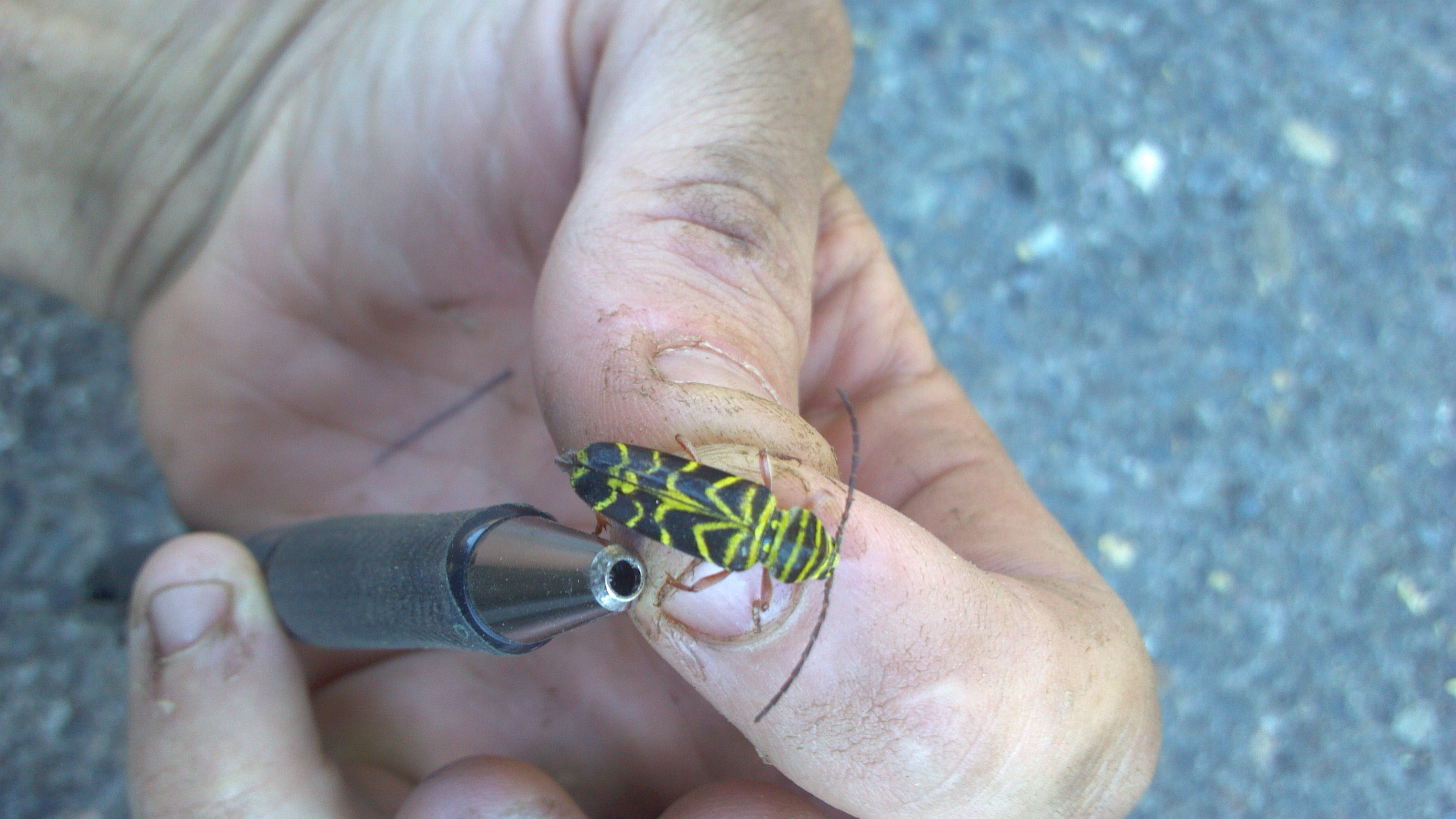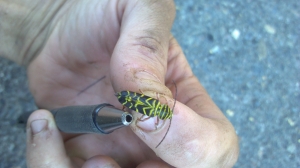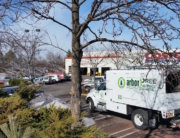It’s our pest o’ the week – the Locust Borer, (Megacyllene robiniae), a robust pest of the non-native Black locust tree. We’ve been seeing this little guy that can cause some significant damage in our local locust trees. Specifically, Pioneer Park in Bend has had some issues with this pest and we have been working to find solutions.
First things first. Here’s what a Black locust tree looks like:
Now, at first glance the Locust Borer looks like a stinging wasp or Yellow Jacket, as they are black with yellow stripes across the back. Like this:
The adults are not the issue as pests, but it’s the larvae that feed on the Black locust tree and cause the damage. The eggs are laid in the locust trees in the fall. Newly emerged larvae spend several months in tree trunks, first hibernating through the winter under the bark, then tunneling into trees in the spring, eventually making tunnels about 4” long and .25” wide. They pupate in late July/early August, then the adult beetles emerge late August to September.
Here’s that the damage looks like. Yuck:
Healthy, vigorous trees can survive this damage, but previously weakened or damaged Black locust trees are often killed by an infestation of the larvae. The most important natural enemy of the borer is the woodpecker, so no complaints if you hear that incessant pecking sound!
Keep an eye out for this pesky critter and give us a call or email us if you think you have a Locust Borer infestation. As arborists, we strive to provide solutions that work for you and a healthy urban forest.
Mike D.
541-480-4223










